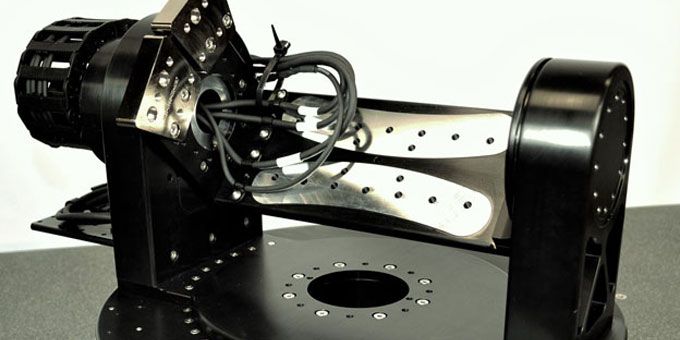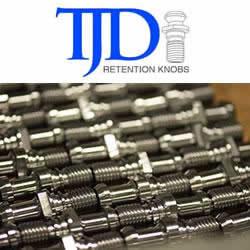As the demand for more and more exacting motion control increases across numerous industry sectors, it is vital that before investing, customers are informed enough to make sure that they select the right solution for their specific application.
 Ultra-Precision Motion Control – Key Considerations for Supplier Selection
Ultra-Precision Motion Control – Key Considerations for Supplier Selection

Bill Hennessey | ALIO Industries
As the demand for more and more exacting motion control increases across numerous industry sectors, it is vital that before investing, customers are informed enough to make sure that they select the right solution for their specific application.
The motion control sector is characterized by an array of vendors in many ways saying the same things, sometimes in subtly different ways. But statements of competence often flatter to deceive, a bald statement about accuracy, for example, obscuring enormous differences between the capabilities of vendors in terms of repeatability, and motion control solutions being fit for purpose.
Starting with the premise that if a good motion control solution is expensive, how much more expensive is a bad one (with all this implies in terms of time delays and costs of re-investment in a suitable motion control solution) in this piece, we attempt to arm manufacturers with the questions that they need to ask their short-listed motion control technology providers to ensure that the motion control solution option chosen is right first time and up to the job.

Questions need to be asked that delve into motion control vendors’ capabilities and their values.
Customer Focus. Ideally your chosen motion control technology vendor should sell solutions to customers not just products. The key is to be able to customize motion control solutions to specific customer applications. When working in the area of nanometer-level motion control, your chosen vendor should have extensive experience working in the nanometer world. The vendor should also have a demonstrable passion about — and absolute focus on — precision. A vendor supplying nanometer-level motion control solutions should be able to prove its credentials and demonstrate that it has provided a significant number of best-in-class, efficient, and cost-effective motion control solutions for an array of different industry applications. Ask your chosen vendor for evidence. All claims made should be able to be substantiated and this will prove whether your short-listed vendor is equipped to operate at the nanometer-level of accuracy or just the micron level.
What is Motion Control? This may seem like an odd question to ask a motion control technology provider, but it does actually get to the heart of the difference between vendors. Most vendors sell off-the-shelf solutions and leave their customers to align them with their specific applications. In a way, this demotes motion control to a necessary evil, a link in a process chain that is expensive and complicated. But when your vendor provides truly cutting edge nanometer-level accurate and repeatable motion control solutions, it elevates motion control from a necessary evil to an enabling technology. If a vendor provides the best-in-class, most accurate, and most repeatable motion control solutions on the market, they will be able to push the boundaries of what customers may see as possible, and will therefore promote the ability to manufacture innovative, bleeding-edge products that stimulate competitiveness. Try and assess your short-listed vendor’s view of motion control. Do they see obstacles and problems, or opportunities and solutions?
Editors Recommendation "Rebuilding Components With Reverse Engineering"
Partnership. Your chosen vendor should place an emphasis on being your strategic partner in product development. It is only by doing this that you can be confident about achieving your challenging motion control and manufacturing goals. Key is early stage engagement with you chosen vendor, and a feeling that they want to truly become embedded in the development of your end-use products and allied motion control solutions. Once again, the difference is between a vendor that sells off-the-shelf solutions (which is not that concerned about your product development process), and one that is dedicated to providing you with customized solutions (which will necessarily want to help you navigate the inherently complicated area of nanometer-level motion control solutions optimized to specific applications). You want to feel that if you don’t engage fully with your chosen vendor that you will compromise quality of outcomes, speed of outcomes, and cost of outcomes. Also, check out the warranty that your vendor is willing to extend. This is a sure-fire way of understanding the level or confidence they have in their own solutions.
Vertical Integration. When working in a world where nanometer-levels of accuracy are the norm, it is vital that motion control products are manufactured in one facility. Ask your vendor whether they have design, machining, metrology, manufacturing, and assembly under one roof. The cross collaboration between product development teams is vital to the achievement of reliable and repeatable ultra-precise motion control solutions, and vertical integration is disproportionately important as the demands for accuracy move from micron-level to nanometer-level precision.
Team. Drill into the experience and technical know-how of your short-listed vendor’s team. Especially when your demand is for nanometer-level motion control, you need to make sure that your vendor has a dedicated focus which will translate into innovative and cutting-edge motion control solutions. Much of this is about the culture you will see in a vendor company. Assess whether you detect a “can do” attitude and whether your vendor seems to nurture a collaborative environment. But above all see if you can feel a passion running through your vendor’s team. If the passion is there, honesty and integrity will often follow, and with that will come trust. And it is ultimately trust that you need to bottom out when choosing a vendor. You need to trust that the motion control solution that you buy fits your requirements, and is not just another unit shifted by the vendor to hit a sales target regardless of ultimate customer satisfaction.
Solutions. If your short-listed precision motion control technology provider is really credible, it will be able to show you a series of innovative solutions that redefine the motion control market. Here you should be looking for evidence of next-generation “blue ocean” technologies, not variations of legacy traditional motion control technologies. This is like the difference between vendors selling hexapods and a company like ALIO Industries that sells the Hybrid Hexapod®, which overcomes process limitations in traditional hexapods, and exhibits orders-of-magnitude improvements in precision, path performance, speed, stiffness, and larger work envelope. Nanaometer-level repeatable motion control is achieved by pushing the envelope, not tweaking years-old technologies to squeeze out ever decreasing increases in accuracy. Check out your vendor’s portfolio of products, the customized solutions they have provided, and the level of innovation that is evident in creating new solutions.
Interrogate precision claims. Pinning down motion control vendors over statements of precision is a minefield. Ultimately, claims on nanometer-level precision is meaningless unless this nanometer-level precision is achieved repeatably. Vendors that cannot achieve repeatable nanometer-level motion control often need to resort to at worst false, and at best illusory claims that muddy the waters. Some vendors even go as far as to publish “typical specifications” and “guaranteed specifications”, typical specifications showing what “could” be possible in a motion control solution, which is greater precision that can actually be guaranteed. In other words, they show what they would like to be able to do, and then demonstrate that what they actually can do is much worse. This takes lack of clarity to a whole new level, and is extremely confusing for customers. Again, look for evidence of vendors that are trying to move this conversation along. ALIO Industries, for example, now talks in terms of Point Precision® referencing performance specifications to a point in space at the single digit micron or nanometer level, and is working with NIST to move on from the planar methodology that current motion control standards use. It is vital that you interrogate precision claims diligently before a making motion control technology purchase. It is also critical that ASTM and/or other internationally registered standards are followed by vendors, instead of methods developed to flatter a particular vendor’s products and which provide flattering data calculations which give a false illusion of precision.
In essence the choice of a nanometer-level motion control solutions provider is based on a number of factors, and is a mix of not just technological competencies but also core values and what “makes a company tick”. Investment in an ultra-precise motion control solution is expensive, and customers need to be certain before nominating a motion control vendor that they will have a best-fit solution that is right first time.
 About C. William Hennessey
About C. William Hennessey
C. William (Bill) Hennessey founded ALIO Industries in 2001 with the goal of designing the world’s most precise, highest quality 6 Axis robot built in the USA. ALIO means a ‘better way’ in Latin, indicating that the company has always thought outside the box when developing its motion control solutions. Bill has been a serial entrepreneur, mechanical engineer, robotics sales leader and marketing professional in the robotics, lasers and automation fields with over 40 years of experience at large international corporations and small start-ups. Bill has a BS in Mechanical Engineering Technology and a minor in Business Administration from the University of Maine.
If you like this article you may like "Predictive Analytics vs Machine Learning"
The content & opinions in this article are the author’s and do not necessarily represent the views of ManufacturingTomorrow
Comments (0)
This post does not have any comments. Be the first to leave a comment below.
Featured Product

